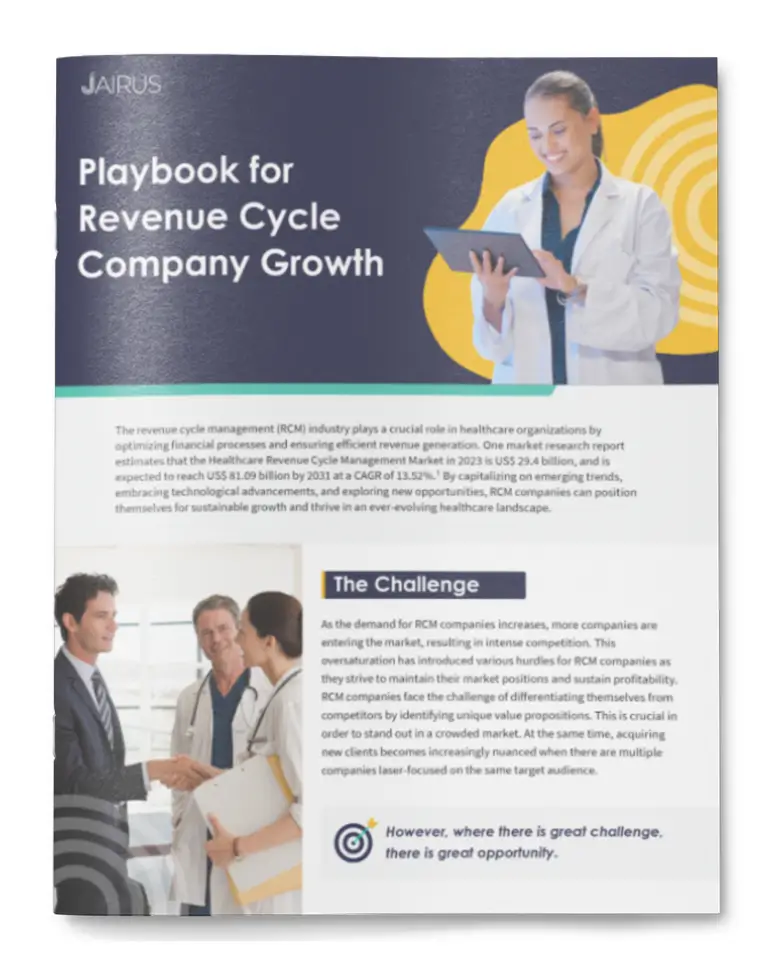Step-by-Step Marketing Strategies for Every Stage of the RFP Process
In medical device and healthcare technology sales, business growth is often built around winning through prospects’ Request for Proposal (RFP). These decisions typically occur every 3 to 7 years for capital equipment and commoditized products like stents or gloves. Success requires a coordinated marketing strategy that influences buyers throughout a long RFP lifecycle.
We break down this RFP-driven sales model into four actionable stages:
- Building Awareness Before the RFP
- Influencing the Go/No-Go Decision
- Engaging During the RFP Process
- Reinforcing Value After the Win
Each stage demands targeted marketing tactics to position your brand for success.
How to Build Awareness Before the RFP
As it often happens during a contract term, your target is locked in with their current vendor due to pricing commitments from a previous RFP. As a result, your company is effectively locked out of selling until the next RFP cycle. For about 75% of this time, there’s little value in pushing hard on direct sales.
This is the education phase in the RFP Cycle.
This includes developing webinars, white papers, case studies, and thought leadership content tailored to both clinical and non-clinical stakeholders.
For example, if your surgical instruments offer a unique feature—like better grasping of inflamed tissue—your goal is to educate buyers so this feature becomes a requirement in the next RFP. If you’re the only vendor with that feature, you’ve just set yourself up to win before the RFP is even issued.
How Do You Influence the Go/No-Go Decisions in Healthcare Procurement?
It’s about ensuring that when the next RFP cycle begins, your brand is not just known, but respected. You’re not selling now—you’re seeding the ground for future consideration. About a year before a contract is up for renewal, supply chain teams typically engage clinical stakeholders to decide: Should we go back to market or renew with our current medical supplier?
If you’re the incumbent, you want the answer to be “no”—negotiate an extension. If you’re trying to break in, you want that answer to be “yes”—force the system to reconsider its options.
This phase is where the education efforts help influence decisions in Healthcare Procurement.
If you’ve done your job, the clinical audience will advocate for you, pushing the system to go to RFP and include you in the evaluation. If no one in the system knows who you are or what value you bring, you won’t even get invited to bid.
How to Engage Stakeholders During the RFP Process
Once the RFP process is underway, it’s game time. Marketing will still play a vital role—especially with certain members of the value analysis committee (VAC), which is usually made up of clinical, financial, and operational stakeholders.
The reality is, most sales reps only have strong relationships with the clinical audience.
That leaves two-thirds of the decision-makers under-engaged. Meaning, your marketing must pick up the slack by delivering content, campaigns, and testimonials targeted to financial and operational leaders. Email outreach, paid LinkedIn campaigns, and role-specific webinars become powerful tools for influence.
An easy way to improve your win rates is to have pre-built campaigns ready to launch.
Use company-branded templates that can be quickly customized and activated for any health system entering an RFP cycle. This standardization allows for speed, consistency, and measurable impact.
How Can You Reinforce Value After Winning an RFP?
At Jairus Marketing, we specialize in MedTech Marketing.
We help medical device, software, and technology companies to build and execute RFP-ready marketing strategies that influence decision-makers, accelerate consideration, and maximize wins.
Post-conversion, you must continue to prove ongoing value, especially in large-scale transitions where switching costs are high.
Deals can collapse if value isn’t reinforced early and often. To prevent churn and protect hard-won contracts, marketing must continue driving home the benefits of the new solution, not just to executives, but deep into the organization.
What is the most common mistake in RFP-heavy medical device industries?
Running short-term campaigns in a long-term buying environment. Marketing’s role is to stay visible so that your brand is considered when it matters most.
Not quite ready to start? See how medical tech companies have transformed their RFP marketing strategies and boosted their win rates with Jairus Marketing’s proven approach.
If you’re selling into health systems and want to outmaneuver your competition in the next RFP cycle, let’s talk.


